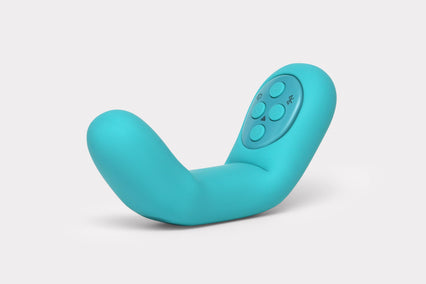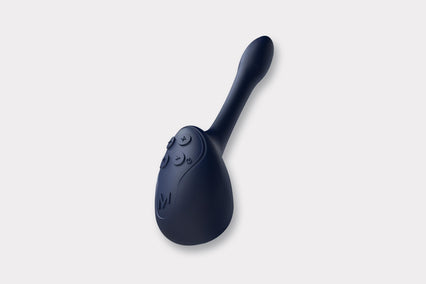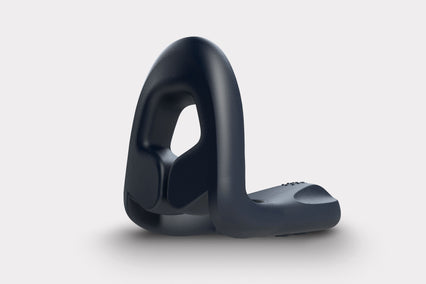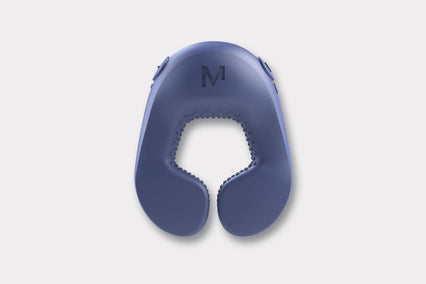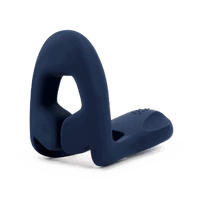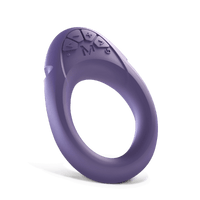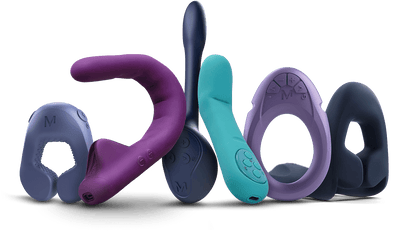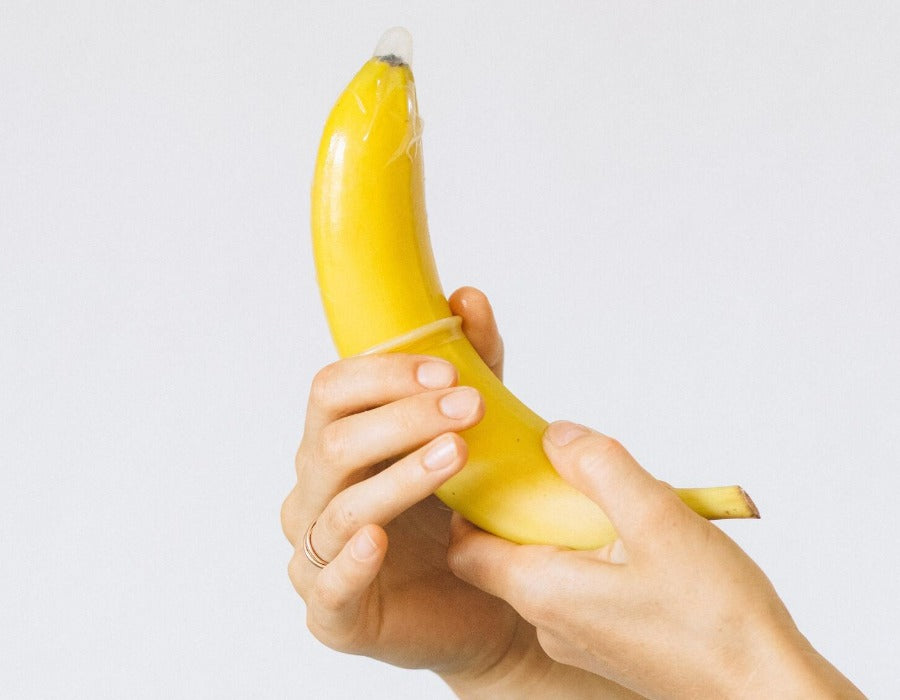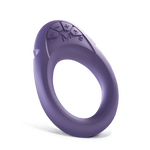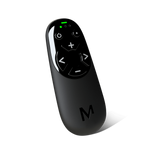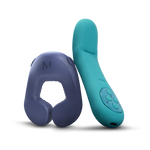Getting ready for childbirth can feel overwhelming, especially with all the tips, advice, doctor’s appointments, and products promising you an easier experience. But there's one simple thing you might not have considered: perineal massage. It's a gentle massage technique that helps prepare your body for birth, reduces your risk of tearing, and speeds up your postpartum recovery. Maybe you've never heard of it, maybe you're wondering what it involves. Here's why perineal massage is worth trying - and exactly how to do it comfortably.
What is perineal massage?
Perineal massage is a gentle stretching technique targeting the perineum - the small area of skin and muscle between your vaginal opening and anus. During vaginal childbirth, this area naturally stretches and can sometimes tear. Perineal massage helps prepare these tissues in advance, improving elasticity and increasing blood flow so the perineum can stretch more comfortably during delivery. With regular practice, it can significantly lower the risk of tearing and help you recover faster after birth.
Typically, it's recommended to begin perineal massage around week 32 of pregnancy, provided your pregnancy is complication-free and your water hasn't broken. As always, check in with your healthcare provider if you're unsure about starting perineal massage or if you have any specific concerns.
The benefits of perineal massage during pregnancy
Perineal massage might sound like just another pregnancy tip floating around online, but there is research-backed evidence that goes beyond the latest trend. Here are the proven benefits of perineal massage during pregnancy:
- Reduces tearing risk during childbirth: Research shows that women who practice perineal massage during pregnancy experience significantly fewer perineal tears or episiotomies (a surgical cut made during childbirth to widen the vaginal opening and help prevent severe tearing). A study published in the Journal of Obstetrics and Gynaecology Research strongly supports perineal massage for minimizing tearing.
- Improves postpartum healing: A study published in Midwifery found that women who practiced perineal massage combined with warm compresses during late pregnancy were nearly twice as likely to have no tearing at all compared to women who didn't (47% vs. 26%). Because perineal massage helps increase tissue elasticity, it can significantly reduce tearing, meaning less discomfort, less pain, and a quicker postpartum recovery.
- Helps postpartum pelvic floor function: Doing perineal massage during pregnancy can also improve your pelvic floor function after birth. A study published in BMC Pregnancy and Childbirth found that women who practiced perineal massage experienced stronger, healthier pelvic floor muscles postpartum, reducing issues like incontinence and pelvic discomfort.
- Increases comfort during labor: A study published in BMC Pregnancy and Childbirth found that perineal massage during pregnancy significantly improved pelvic floor elasticity and comfort. Women who practiced perineal massage reported feeling more comfortable during labor, experiencing less intense sensations of stretching, and overall, had a smoother, less stressful delivery experience.
- Boosts confidence and body awareness: Spending time getting to know that area of your body can help ease anxiety and make you feel more in control during delivery. A study published in BJOG: An International Journal of Obstetrics & Gynaecology found that women who practiced perineal massage during pregnancy felt more in control and prepared for labor. Many reported increased confidence, less fear, and a stronger sense of body awareness as they approached childbirth.
How to do perineal massage: step by step
Ready to give perineal massage a try? Here’s how to do it step-by-step:
1. Get comfortable
Find a relaxed position - either sitting or semi-reclined, with your knees gently bent or supported by pillows.
2. Wash first
Always wash your hands thoroughly, trim your nails, and empty your bladder beforehand for maximum comfort and hygiene.
3. Lubricate generously
Apply plenty of lubricant, using either natural oils (such as almond or coconut oil) or a water-based lubricant. Good lubrication reduces friction and makes the massage smoother and easier.
4. Massage externally first
Before inserting your fingers or anything else, gently warm up the perineal area with an external massage. Slowly move your fingers in circular motions around the perineum, pressing gently downward toward your anus to increase blood flow and warm up the tissues.
5. Insert fingers internally
Once you feel comfortable, gently insert your thumb or finger about 2–3 centimeters into your vaginal opening, roughly the depth of your first knuckle. Press gently downward toward your anus until you feel a mild, comfortable stretch.
6. Massage in a U-shape
Slowly and gently move your thumb or finger in a rhythmic U-shaped motion around the perineum, pressing downward toward your bottom and sweeping from side to side. Maintain this steady pressure and motion for about 2–5 minutes.
7. Keep it consistent
Aim to practice perineal massage for about 10–15 minutes, 3–5 times a week, starting around week 32 of your pregnancy. As you get more comfortable, try different positions such as side-lying or squatting to reach different areas effectively.
Tips to make perineal massage more comfortable
Perineal massage might not feel like the most comfortable thing ever, even though it’s beneficial. Here are a few tips to try to increase your comfort as you adjust to this stretching:
- Use a vibrator: Late-pregnancy perineal massage can feel like advanced yoga, especially with a growing belly. A bendable vibrator like Crescendo 2 is a great tool that can make it much easier to reach your perineum comfortably, relax your pelvic muscles, and maintain steady pressure. Crescendo 2 is especially helpful because it’s long and bends just like a finger, letting you easily reach tricky areas without awkward angles or tired fingers. Bonus: vibrations are known to support healthy blood flow, promote elasticity, and can help you relax fully during each session.
- Warm up with a bath or warm compress: Treat yourself to a relaxing warm bath beforehand, it helps soothe your muscles and calm your mind. Alternatively, you can apply a warm compress. A study published in Midwifery found that women who used warm compresses together with perineal massage during pregnancy experienced significantly less tearing and better postpartum comfort.
- Try a mirror: It can be hard to navigate when you can’t see and aren’t sure where you’re supposed to be. Try using a mirror to help you see exactly what you're doing. This visual guidance can help you feel more confident and relaxed during the process.
- Partner up: Having your partner involved is a practical way to make perineal massage much easier since they can help you reach tricky areas and ease your positioning. Partner participation with perineal massage isn't just practical, it allows your partner to be directly involved, building emotional intimacy, connection, and helping you feel supported together as you prepare for childbirth.
- Listen to your body: Remember, perineal massage should always feel like gentle stretching, never painful or highly uncomfortable. If you experience intense pain, stop and try again later when you feel more relaxed, or consult a doctor.
- Check with your healthcare provider: If you have active infections, vaginal bleeding, pregnancy complications, or if you’re unsure about anything, always consult a doctor before starting perineal massage.
Takeaway
Perineal massage is a simple yet powerful way to prepare your body for childbirth, helping you feel calmer, more confident, and better prepared overall. Just a few minutes a few times each week can help make your delivery smoother and your postpartum recovery quicker.
Make perineal massage even more comfortable with a doctor-recommended tool like Crescendo 2. This versatile, bendable vibrator can help you reach and relax during perineal massage during pregnancy and provides gentle support during postpartum recovery. Plus, when you're ready to reconnect intimately, Crescendo 2 helps enhance arousal and natural lubrication, making it a timeless health tool at every stage of your life.


